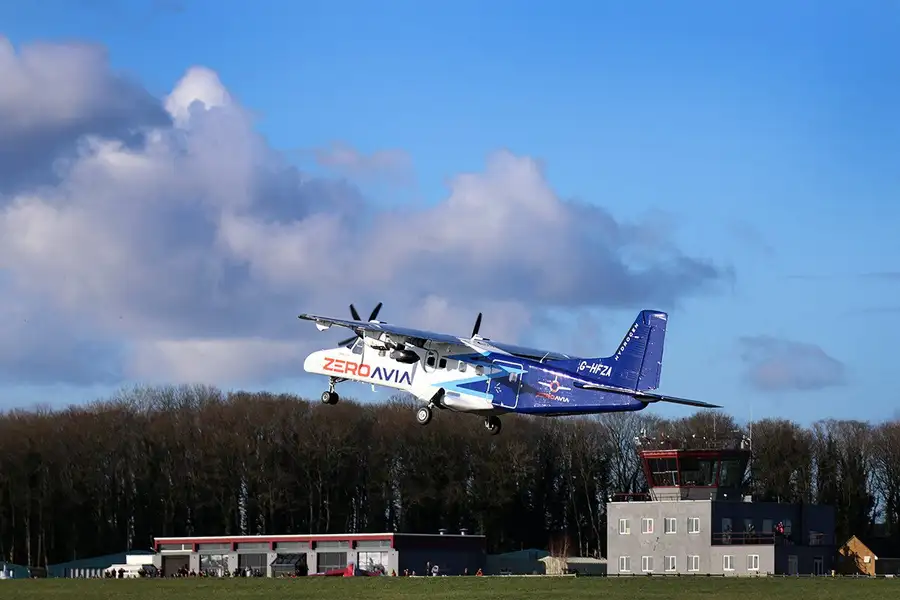‘Sustainable flying’ sounds like a contradiction in terms. A hydrogen-powered electric plane may be emission-free, but how much green energy does it require?
Demonstration flight of ZeroAvia's hydrogen-electric powered aircraft. (Photo: ZeroAvia)
The aviation industry has chosen to take the jump ahead. Instead of waiting for restrictions and taxes on kerosene, it is working hard to fly on hydrogen. Hydrogen produces no CO2 emissions as long as the hydrogen is green and is generated using sustainable electricity.
Several companies and consortia are developing electric aircraft with hydrogen fuel cells. Closest to home is the development of a medium-sized passenger plane that will run on green hydrogen and will fly between London and the Netherlands in around 2028. TU Delft is involved in its development and the National Growth Fund is contributing hundreds of millions to it. The Anglo-American company ZeroAvia is already a step further with a 10 minute demonstration flight and the promise of a fuel cell aircraft by 2025. Finally, Airbus aims to have developed a completely hydrogen-powered electric passenger aircraft, ZEROe, by 2035. Student team Aerodelft and Airbus entered into a research partnership on flying on hydrogen last year.
(text continues below video)
(Video: New Scientist)
How many wind turbines are needed?
For a start, the question is: how many wind turbines does it take to keep one passenger plane in operation? Aviation expert Joris Melkert (Faculty of Aerospace Engineering) has an answer.
He looks up how much kerosene a modern commercial aircraft uses per hour and how many hours it is in operation per year, and uses these figures to calculate its annual energy consumption.
He then calculates the annual hydrogen output of a modern 15 megawatt offshore wind turbine, taking into account limited efficiencies and wind variability.
From the ratio between these two numbers his conclusion is ‘That means that 1,078*10^15 / 2,365*10^14 = 4.55 wind turbines are needed for one sustainable Dreamliner’.
Rounded off, Melkert thus arrives at just under five wind turbines to power one large passenger aircraft.
‘Five wind turbines for one passenger plane’
How many large aircraft does the Netherlands actually have? The CBS (Central Bureau of Statistics, in Dutch) keeps track of everything, including the Dutch air fleet: 274 large aircraft (in 2021). The corresponding renewable capacity is then 247 large aircraft * five wind turbines * 15 MW = 20,625 MW. Or 20.6 Gigawatts.
According to the CBS, 2,571 MW of offshore wind was installed at the end of last year, but the official target for 2030 is 21 gigawatts.
That happens to be the same amount of installed power as would be needed to produce hydrogen for a Dutch sustainable air fleet. In other words, the entire Dutch offshore wind capacity by 2030 could provide just enough hydrogen to fly emission-free.
‘The entire Dutch offshore wind generation will go on hydrogen’
So, to answer the question of whether the Netherlands can fly sustainably in terms of energy in 2030: no, not for this number of flights.
Moreover, in reality, the figures are less favourable. The Netherlands also has 750 small aircraft and 80 helicopters that have been left out of the equation. The energy investment for wind turbines (typically about 5% of the energy yield) has also not been included, nor the materials needed.
Do you have a question or comment about this article?
j.w.wassink@tudelft.nl


Comments are closed.